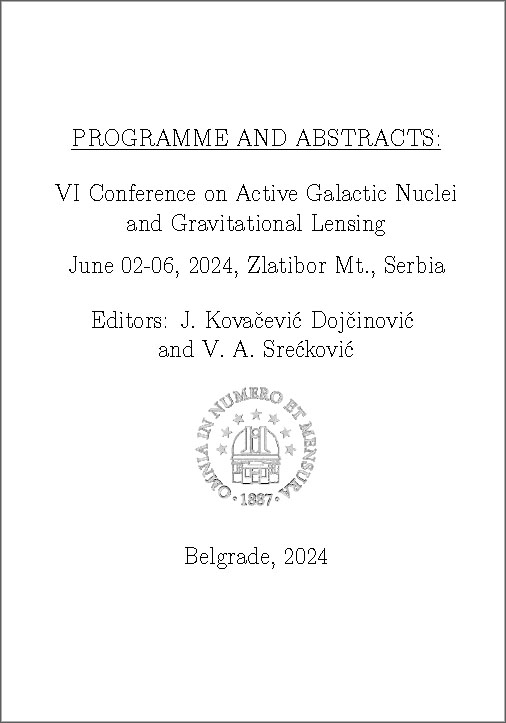Publication
PROGRAMME AND ABSTRACTS: VI Conference on Active Galactic
Nuclei and Gravitational Lensing, June 02-06, 2024, Zlatibor Mt.,
Serbia. Editors: J. Kovačević Dojčinović and V. A. Srećković
Nuclei and Gravitational Lensing, June 02-06, 2024, Zlatibor Mt.,
Serbia. Editors: J. Kovačević Dojčinović and V. A. Srećković
Title
THE DISK PLUS (FAILED) WIND SYSTEM OF 3C 47: A STORY OF ACCRETION DISKS AND BINARY BLACK HOLES
Abstract
Optically thick, geometrically thin accretion disks (ADs) around supermassive black holes are thought to contribute to broad-line emission in type-1 active galactic nuclei (AGN). However, observed emission line profiles most often deviate from those expected from a rotating disk, and the role of ADs in contributing to broad Balmer lines and high-ionization UV lines such as CIVλ1549 in radio-loud (RL or “jetted”) AGN remains unclear. We first quantified the low-ionization broad emission line properties of jetted quasars in the main sequence context. We confirm that broad emission lines show large redward asymmetry both in Hβ and Mg IIλ2800, and an unbiased comparison matching black hole mass and Eddington ratio suggests that the most powerful RL quasars show the highest redward asymmetries in Hβ in the general population of AGN. These shifts can be accounted for gravitational and transverse redshift effects, especially for black hole masses larger than MBH ≈ 108.7 M⊙. The analysis of the extremely jetted quasar 3C 47 added another piece to the puzzle: not only are the low ionization profiles of 3C 47 well-described by a relativistic Keplerian AD model, with disk emission between ≈ 100 and ≈ 1000 gravitational radii, but also the high-ionization line profiles can be understood as a combination of disk plus a failed wind contribution that is in turn hiding the disk emission. Constraints on radio properties and line profile variability suggest that the scenario of 3C 47 might involve the presence of a second black hole with secondary-to-primary mass ratio ∼ 0.5−1. We conjecture that the double peakers — type-1 AGN with Balmer line profiles consistent with AD emission — might have their emission truncated by the sweeping effect of a second black hole, and we analyze the implications for the general AGN population.




